Greek Art Exam 2
1/32
There's no tags or description
Looks like no tags are added yet.
Name | Mastery | Learn | Test | Matching | Spaced |
|---|
No study sessions yet.
33 Terms
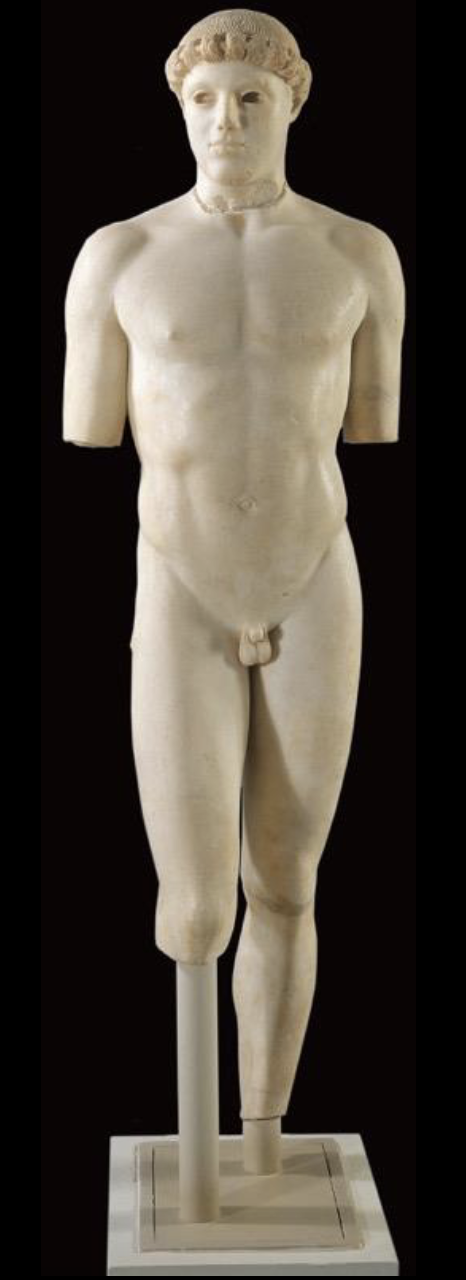
Kritios boy from the Athenian Acropolis, c. 480 BCE. Marble, 3’ 10”. Severe style (contrapposto, thick chin and lips, neutral expression)
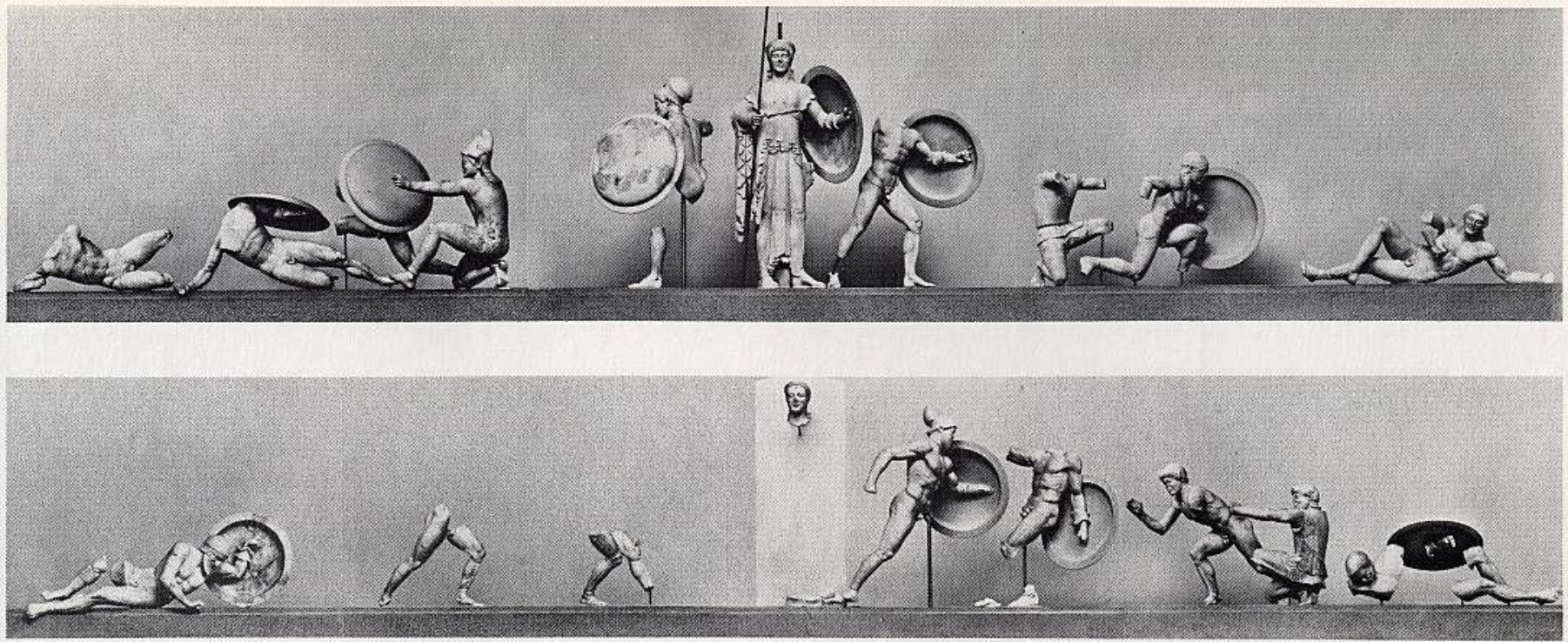
West (above) and east (below) pediments from the Temple of Aphaia on Aigina, c. 470s BCE. Marble, pediments are stylistically different (previously thought that west was older)
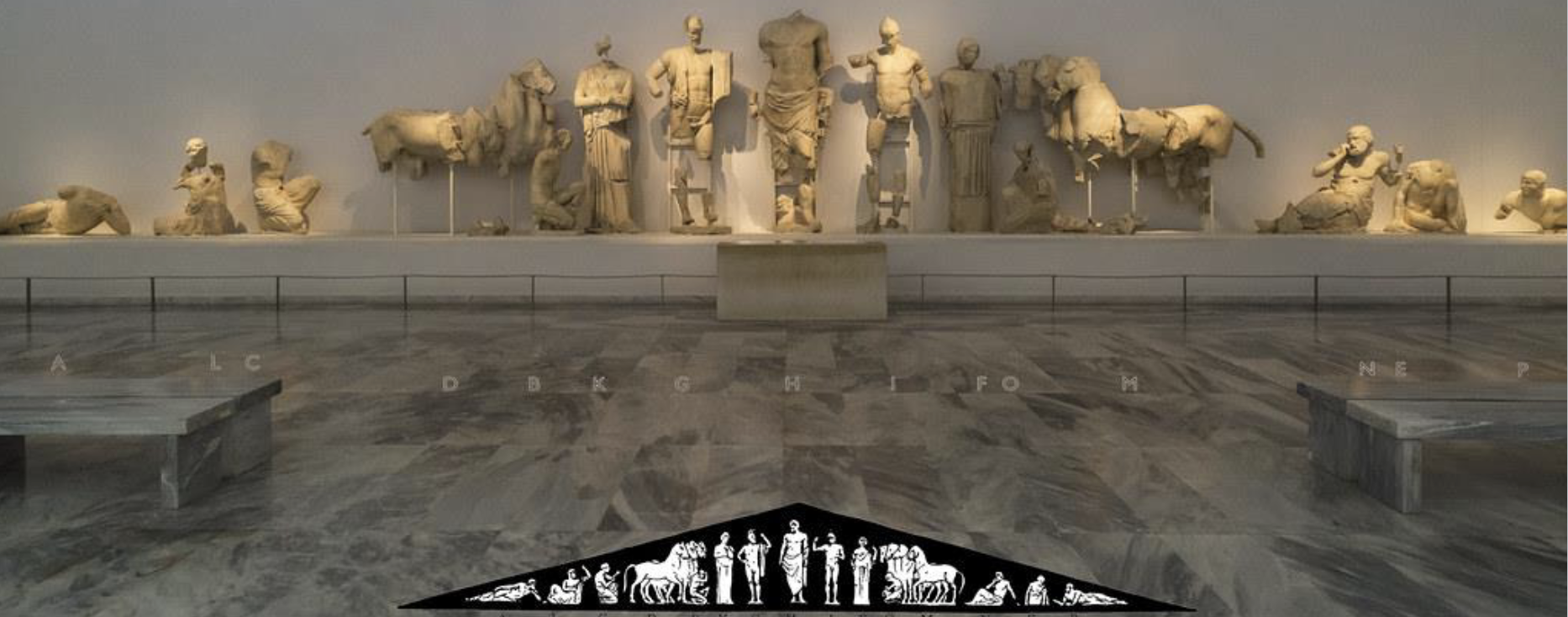
Possible reconstruction of the east pediment from the Temple of Zeus at Olympia, c 470-456 BCE. Marble. Depiction is contentious, said to depict chariot race between Pelops and Oinomaos
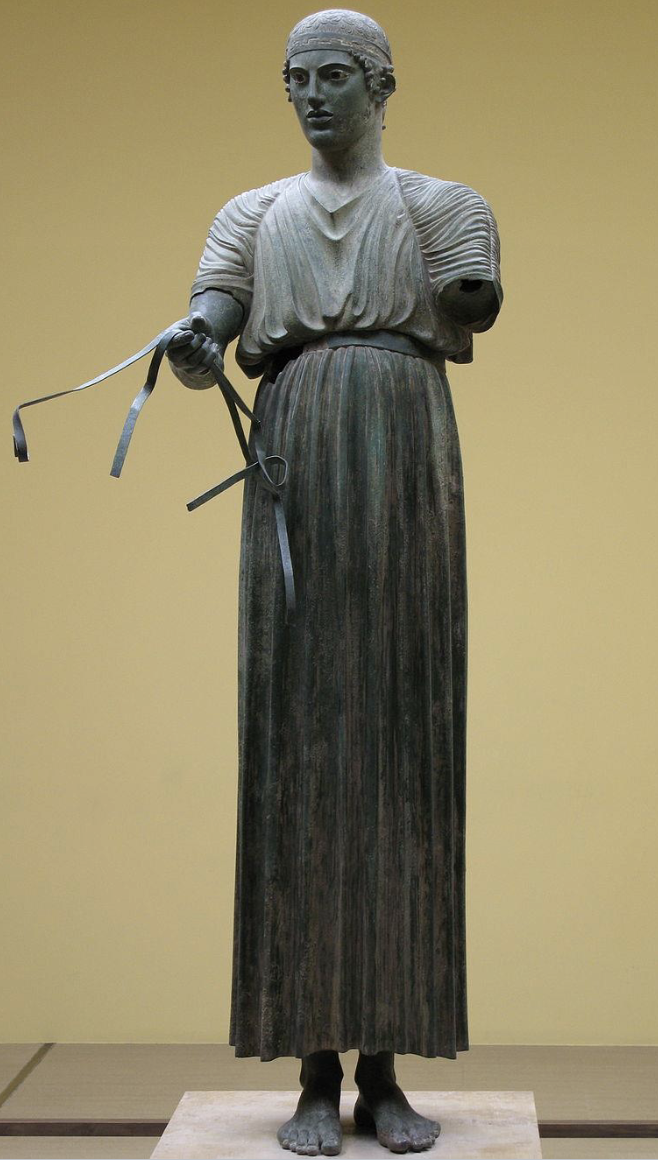
Charioteer of Delphi bronze sculpture. c. 470-450 BCE, 1.8 m. Part of set with horses, surviving inlaid eyes. Severe style but no contrapposto
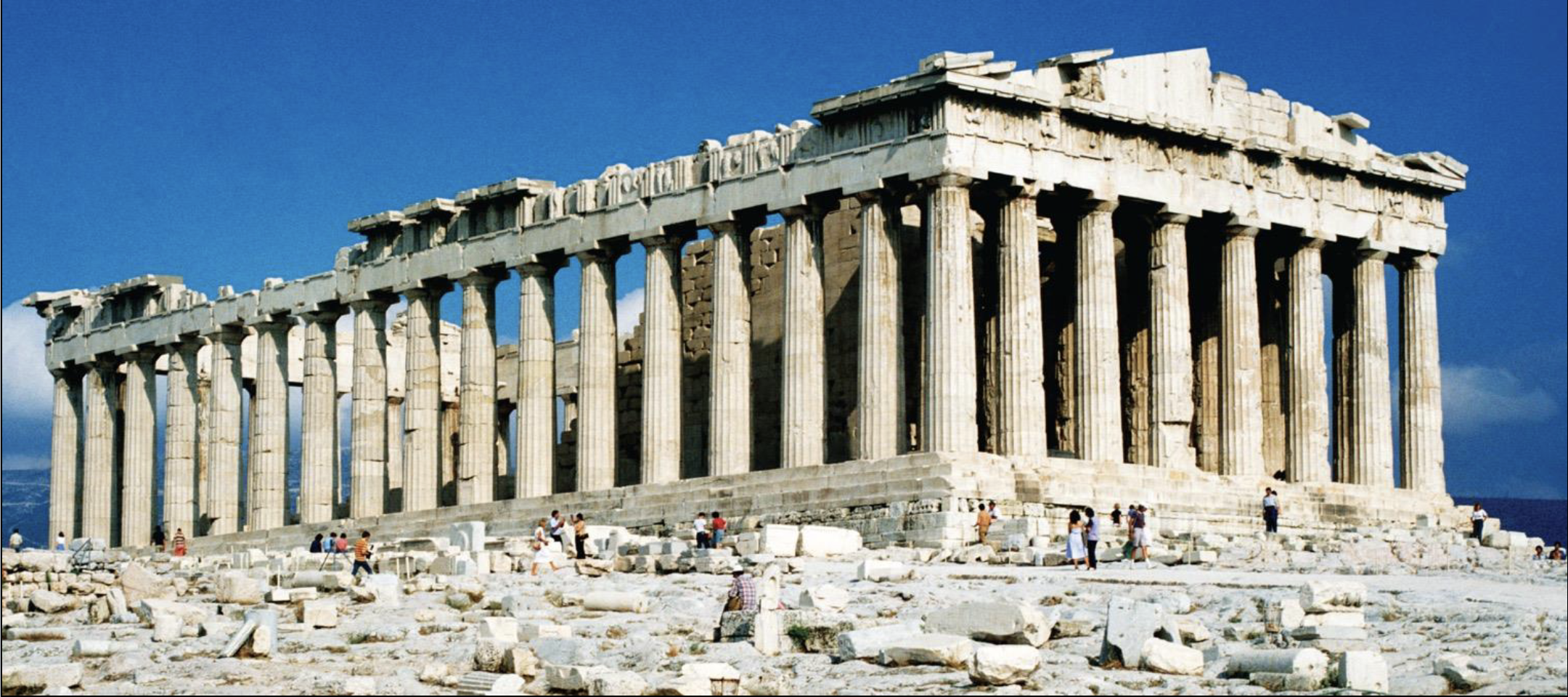
Parthenon in the Athenian Acropolis designed by Iktinos and Kallikrates, c. 447-432 BCE, marble. Doric exterior, Ionic frieze along interior. 4 ionic columns, 8×17, very strict mathematical symmetry
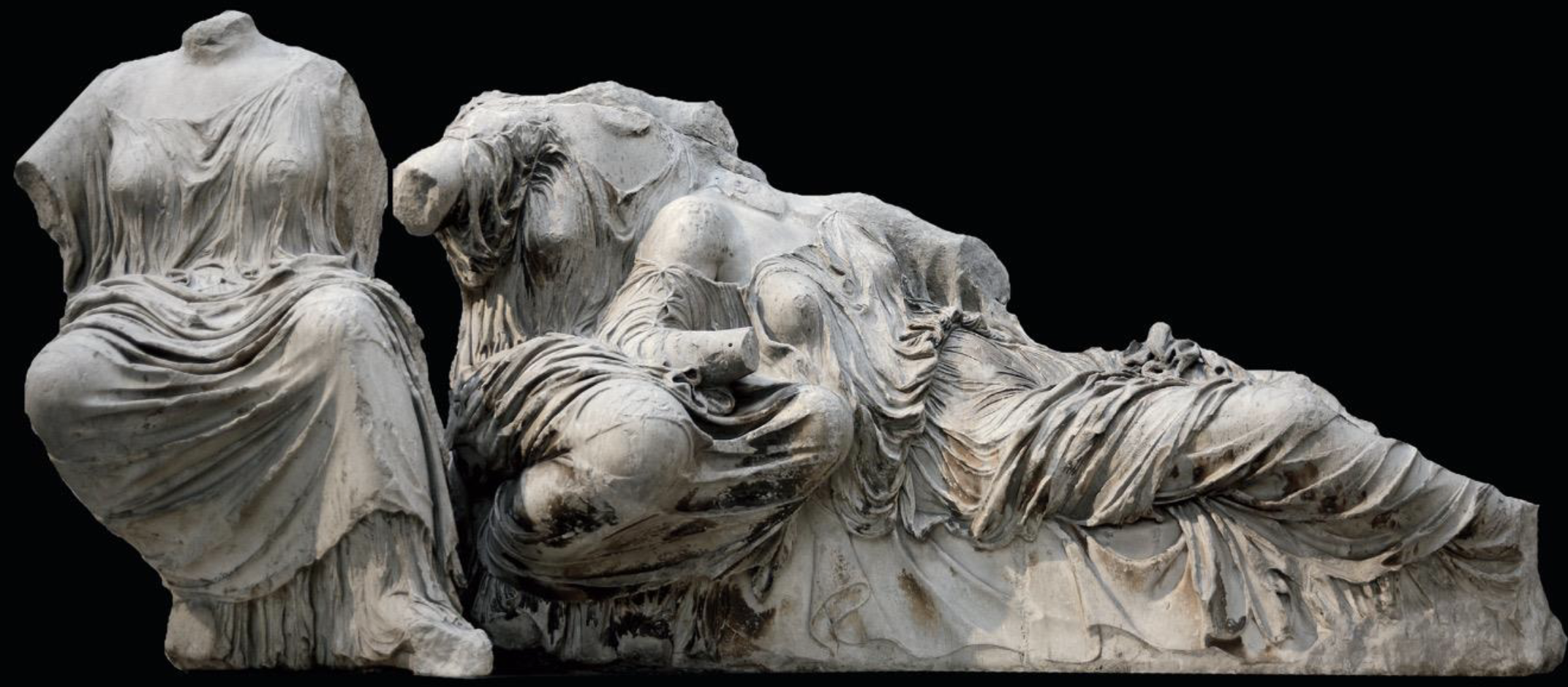
Three goddesses from the east pediment of the Parthenon. Marble, c. 447-432 BCE, marble, high classical (wet drapery)
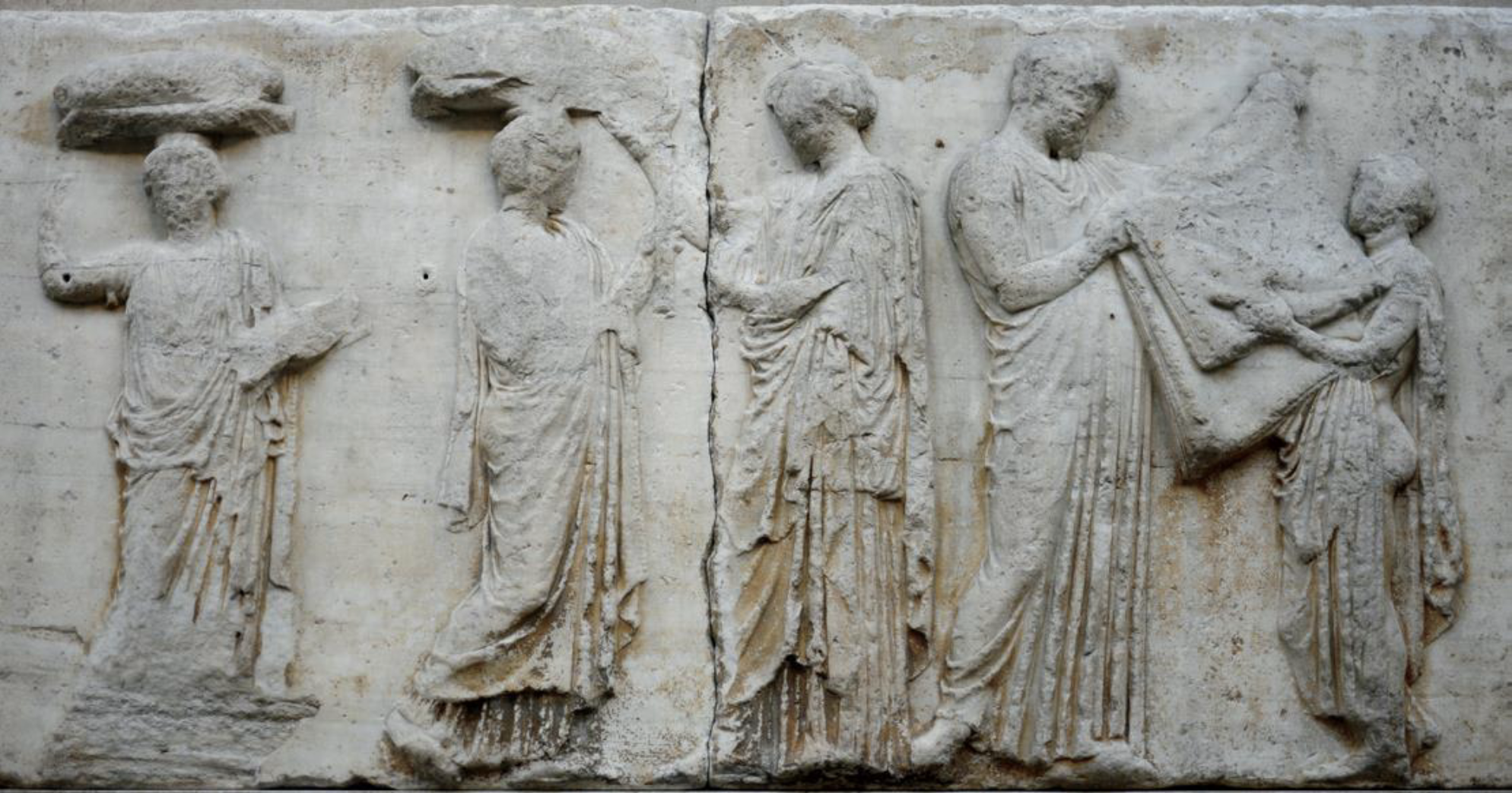
Peplos ceremony from the east frieze (continuous interior frieze), marble. Debated, likely not actually peplos ceremony but may be king Erechthius (saved Athens but sacrificed daughters)
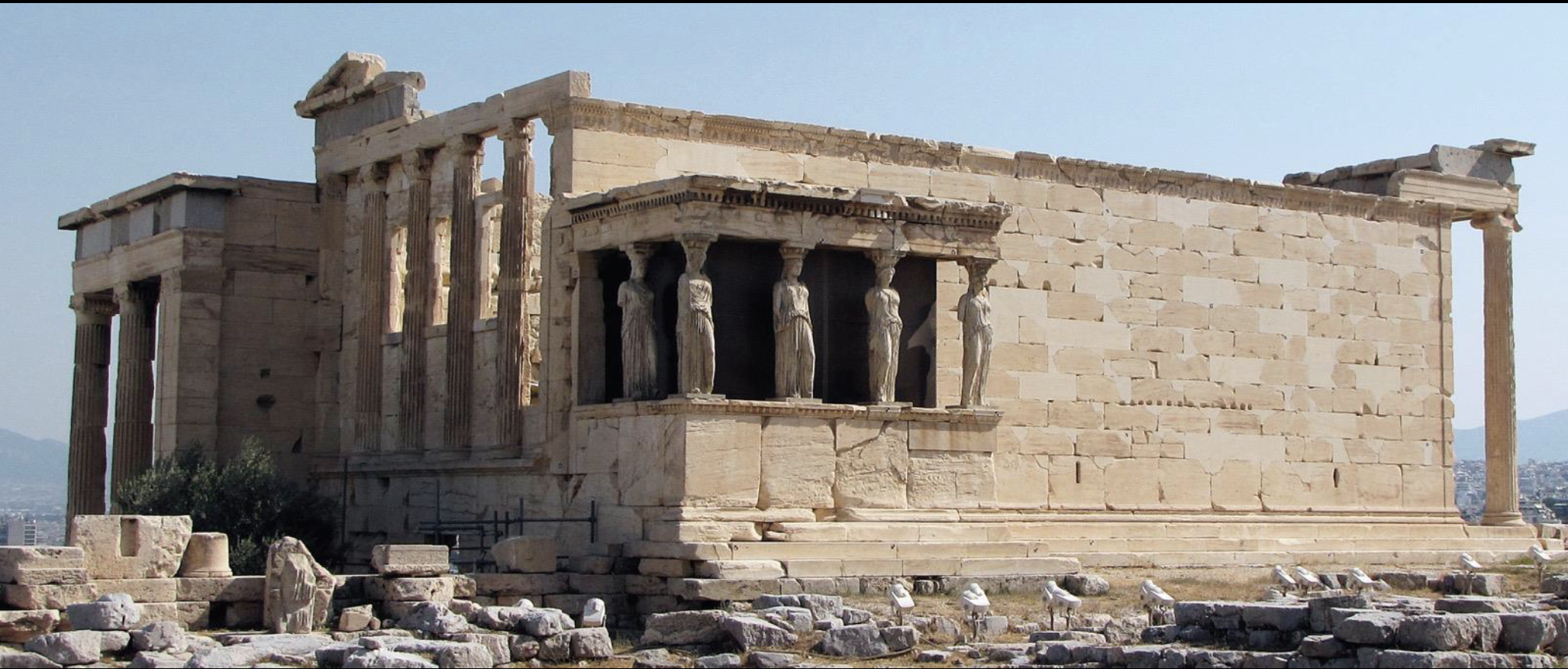
Erechtheion at Athenian Acropolis, c 421-405 BCE, marble with blue limestone frieze. Strange architecture (contains Athena’s olive tree and Poseidon’s spring), walls all on different levels, one ionic wall, caryatids
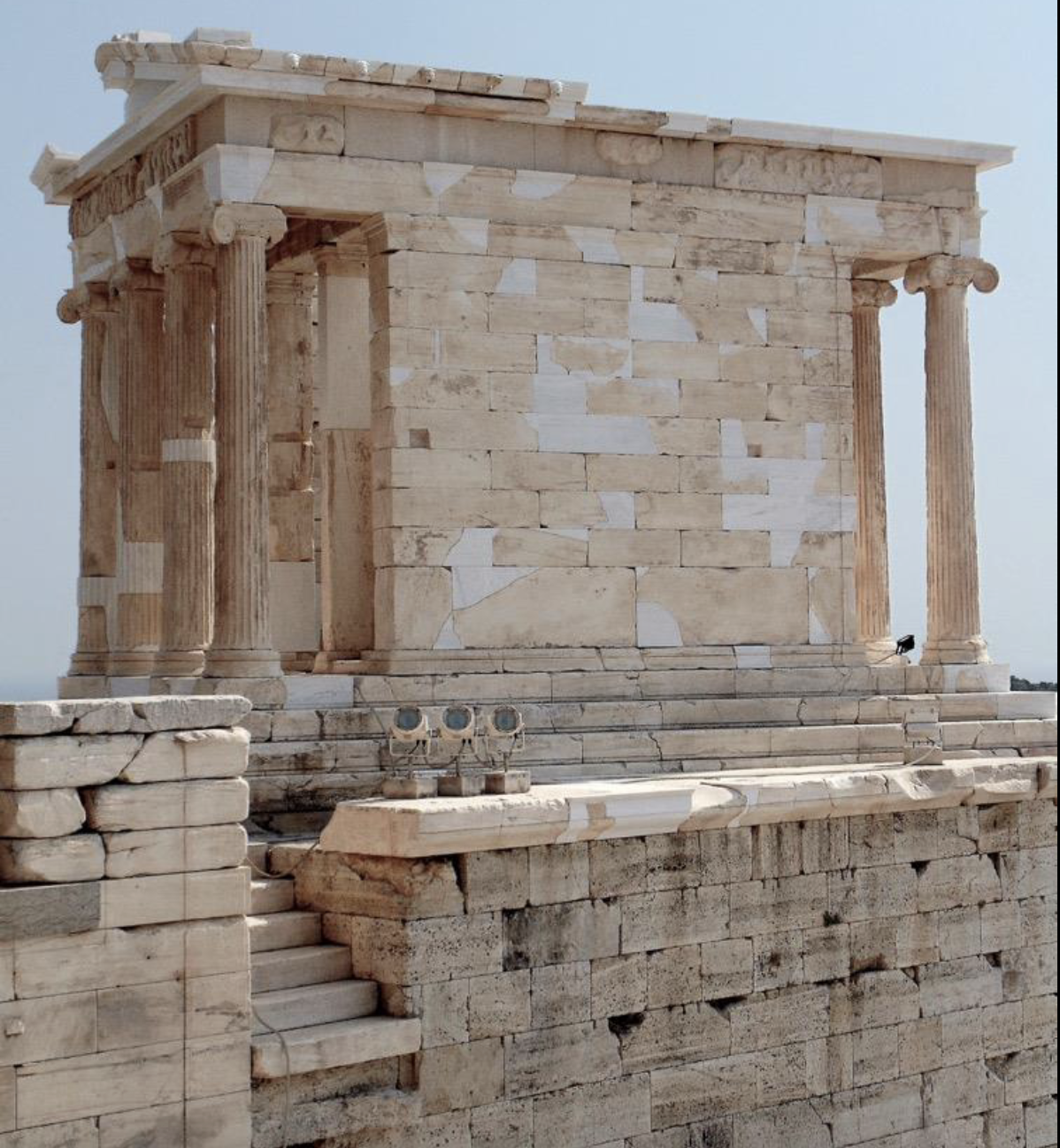
Temple of Athena Nike, Athenian Acropolis, c 438-424 BCE, marble. Next to Propylaia. Columns (4) on west and east sides — amphiprostyle, ionic frieze around top
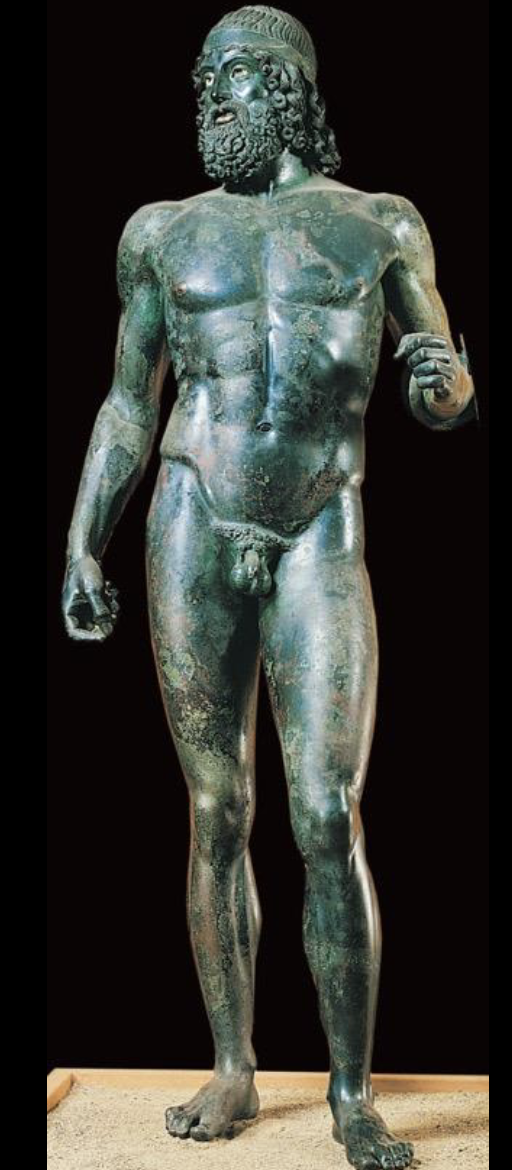
Warrior from the sea of Riace, Italy, c 460-450 BCE. Bronze, 6’6”, one of few surviving bronze statues. Surviving inlaid eyes.
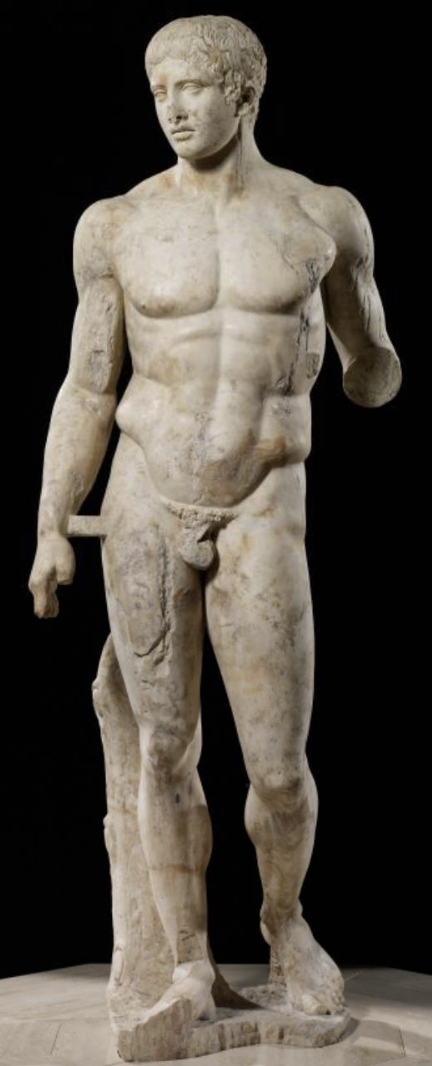
Doryphoros (spear-bearer), c. 450 BCE by Polykleitos. Roman marble copy of bronze statue
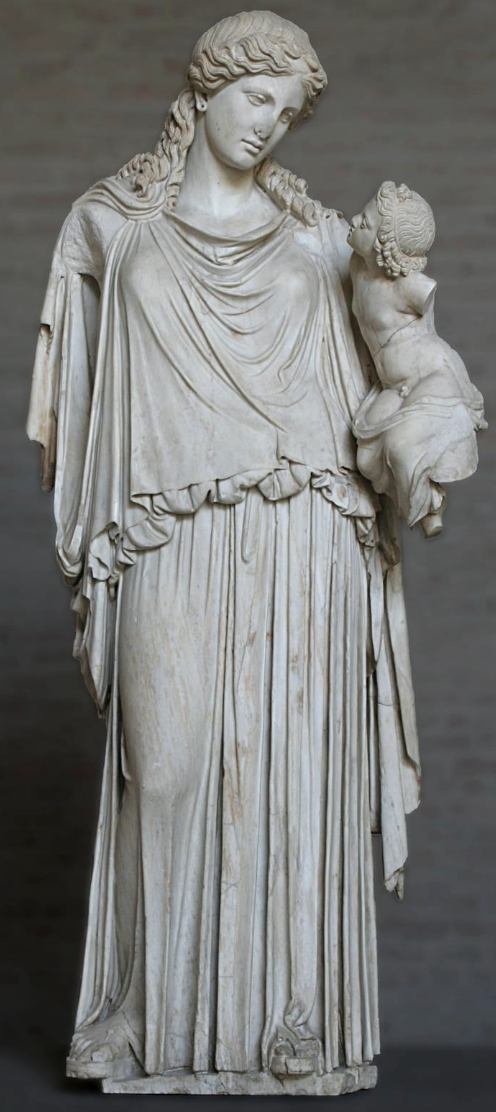
Eirene and Ploutos by Kephisodotos, c. 374-360 BCE. Roman marble copy. High classical (relationship btwn statue and viewer)
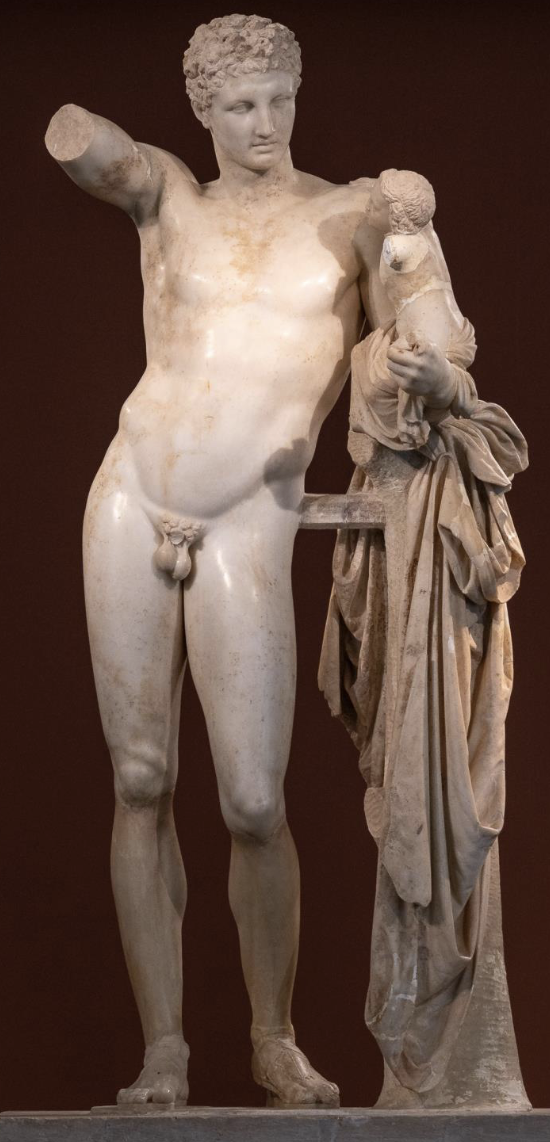
Hermes and Dionysus by Praxiteles, c. mid 4th cent BCE. Found at Heraion at Olympia, may be copy or original. Praxiteles known for s curved+elongated bodies, languid appearance, soft+lifelike sculptures
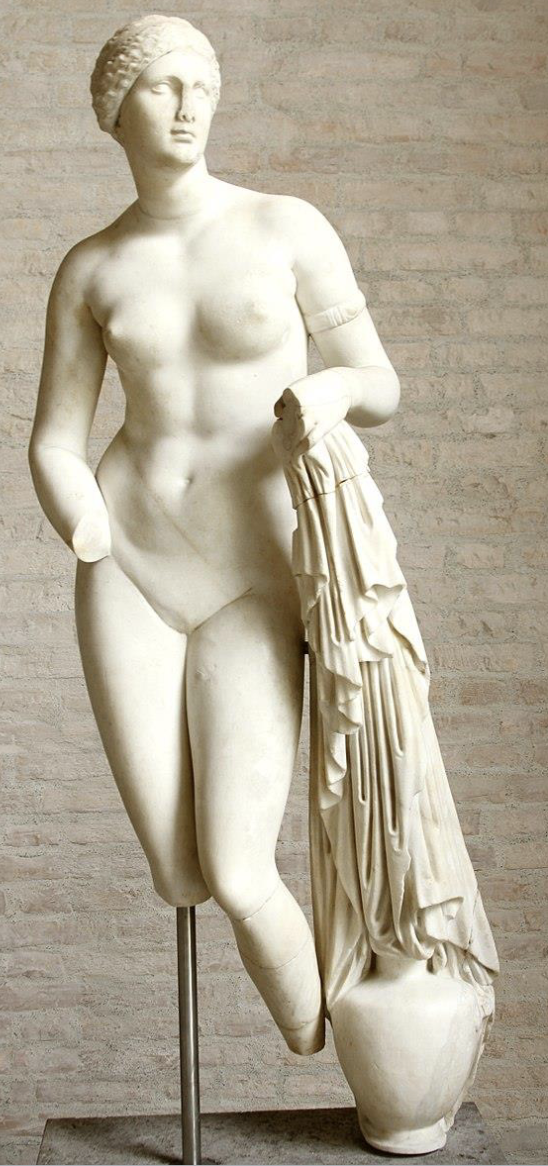
Aphrodite Braschi, Roman copy of Aphrodite at Knidos by Praxiteles, c 350-340 BCE. One of first non-mythological depictions of goddess, statue is aware of being viewed

Temple of Apollo at Bassai, c 400-390 BCE, limestone. Contains first corinthian column, constructed to look older (narrow). Same architect as Parthenon. To Apollo Epikouryos (healing, temples to him and Asclepius after plague)
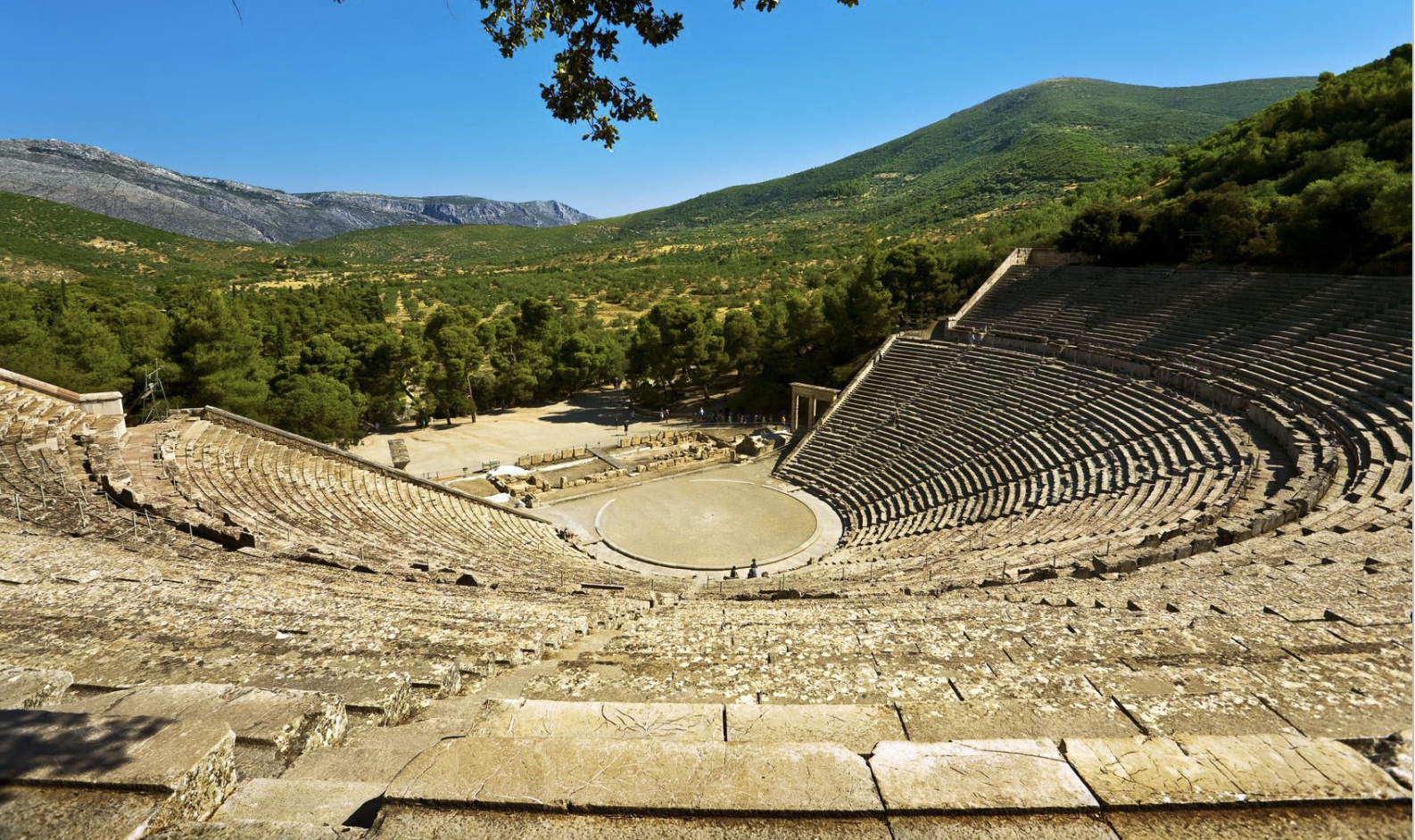
Epidauros stone theater, 4th or early 3rd cent BCE. Acoustics, could hold 6,000. Still used today
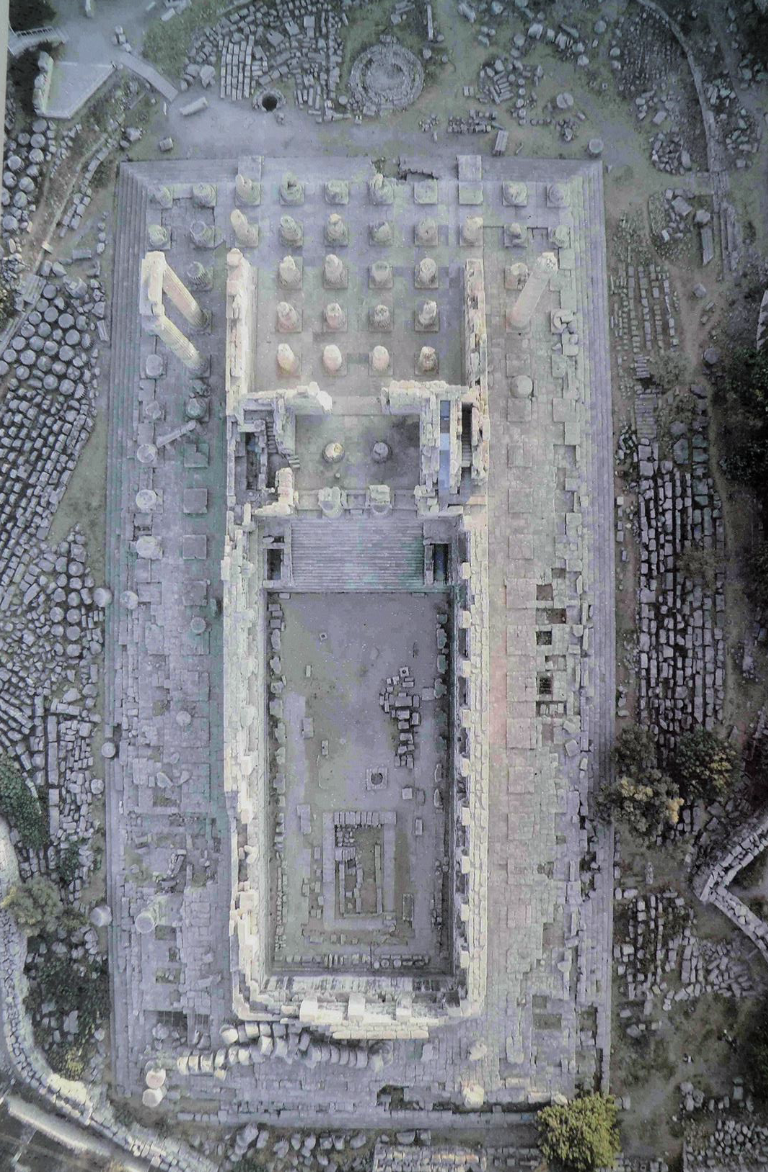
Temple of Apollo at Didyma, designed by Paionios of Ephesus and Daphnis of Miletos, begun c 330 BCE (took centuries to finish), marble and limestone. Shrine inside temple in open courtyard
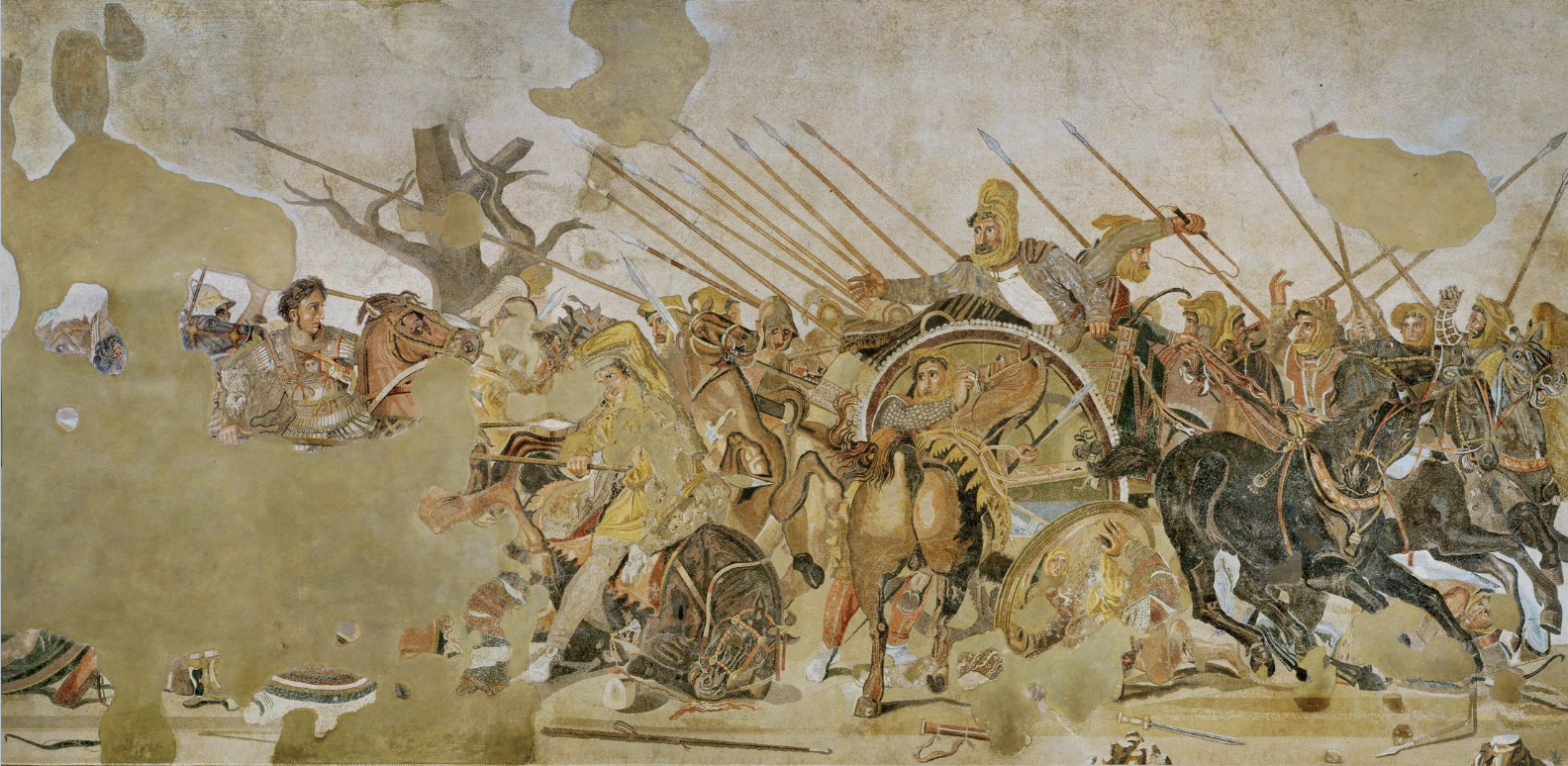
Alexander mosaic, House of the faun, Pompeii Italy, c 120-100 BCE (?). Depicts battle between Alexander the Great and Darius of Persia. May be based on painting by Philoxenos of Eretria
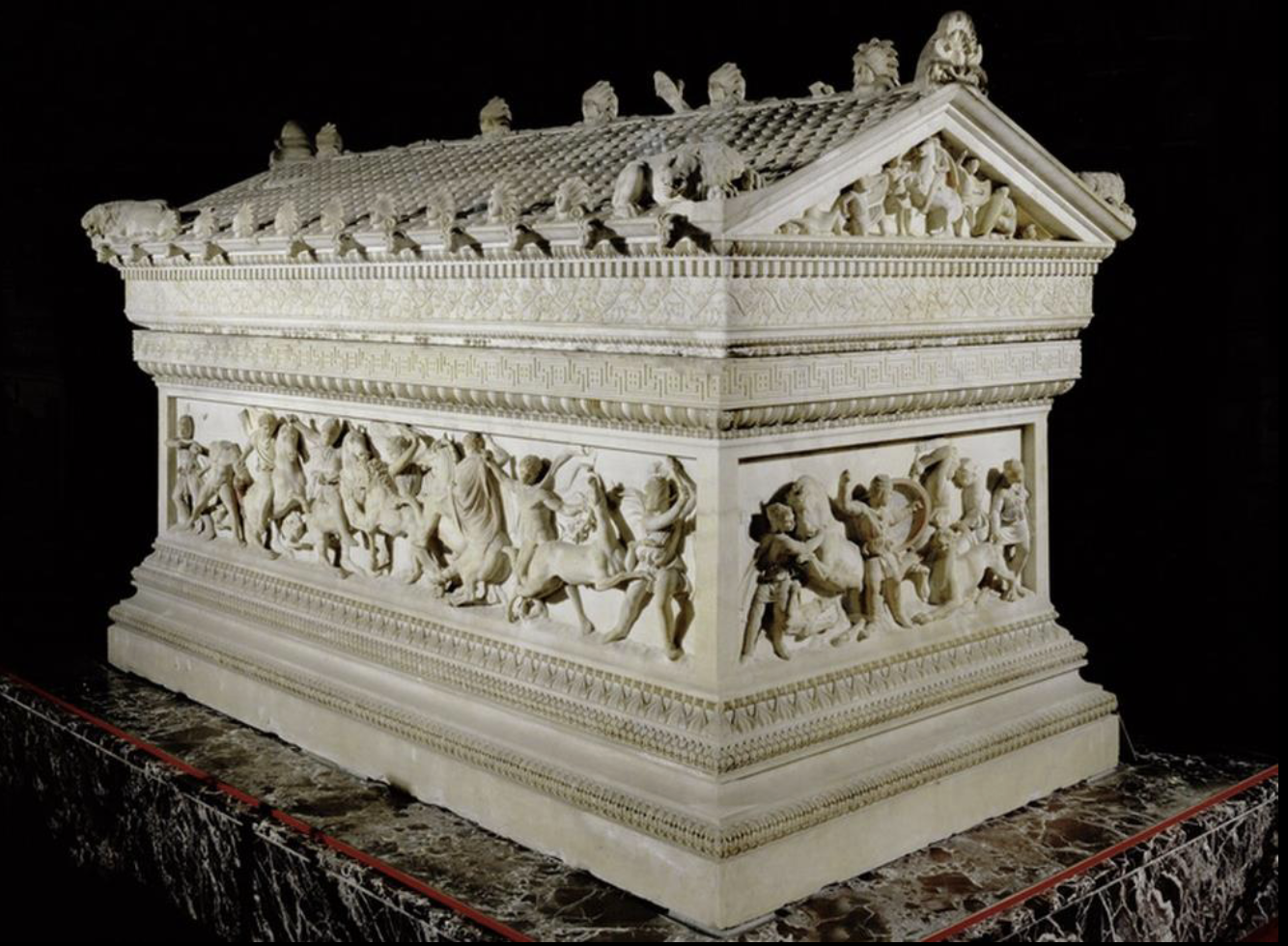
Alexander sarcophagus, c 325-311 BCE, marble. Not Alexander’s sarcophagus but Abdalonymous’. One side depicts Alexander+Abdalonymous fighting Persians, other depicts Greeks and Persians cooperating in lion hunt
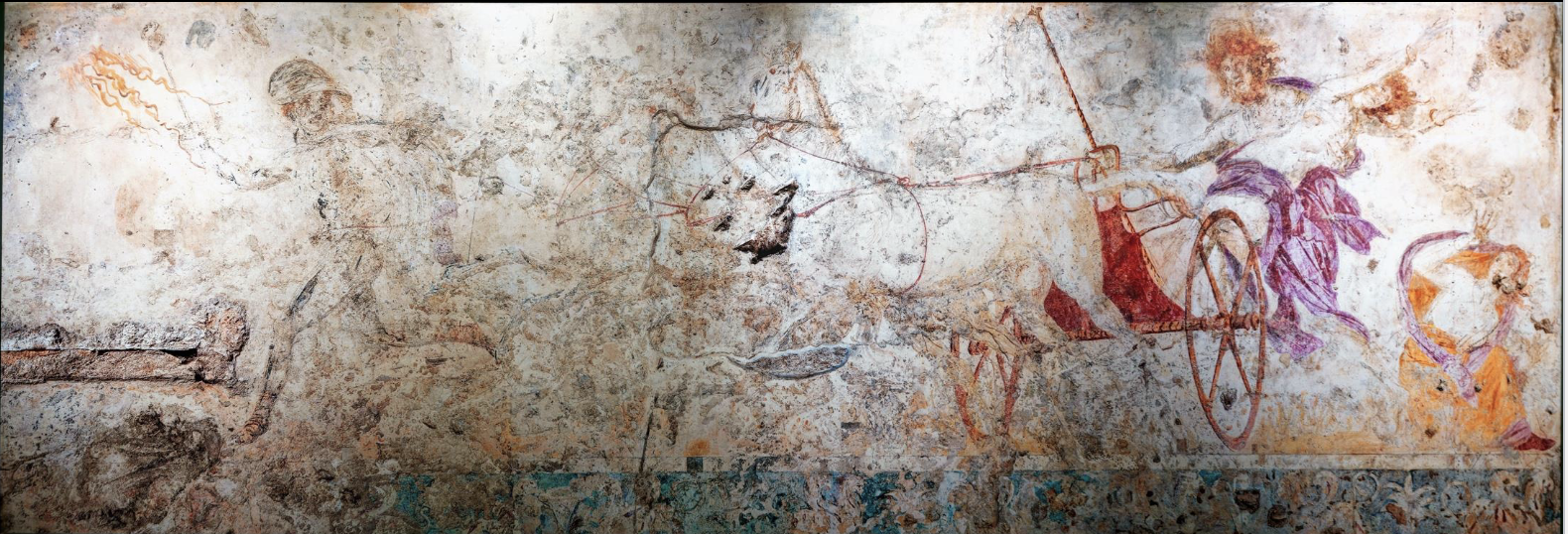
Hades and Persephone wall painting from a tomb in Vergina. Late 4th or early. 3rd cent BCE. Uses foreshortening
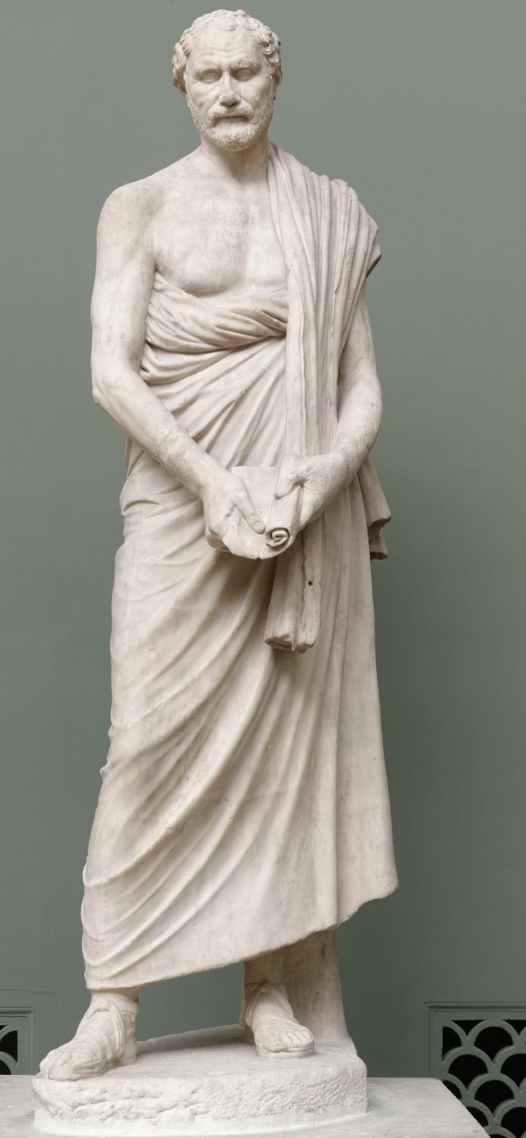
Demosthenes by Polyeuktos, c 280/79 BCE. Roman marble copy. Face shows concern. Created ~50 years after his death, is likely recreation, not exact portrait
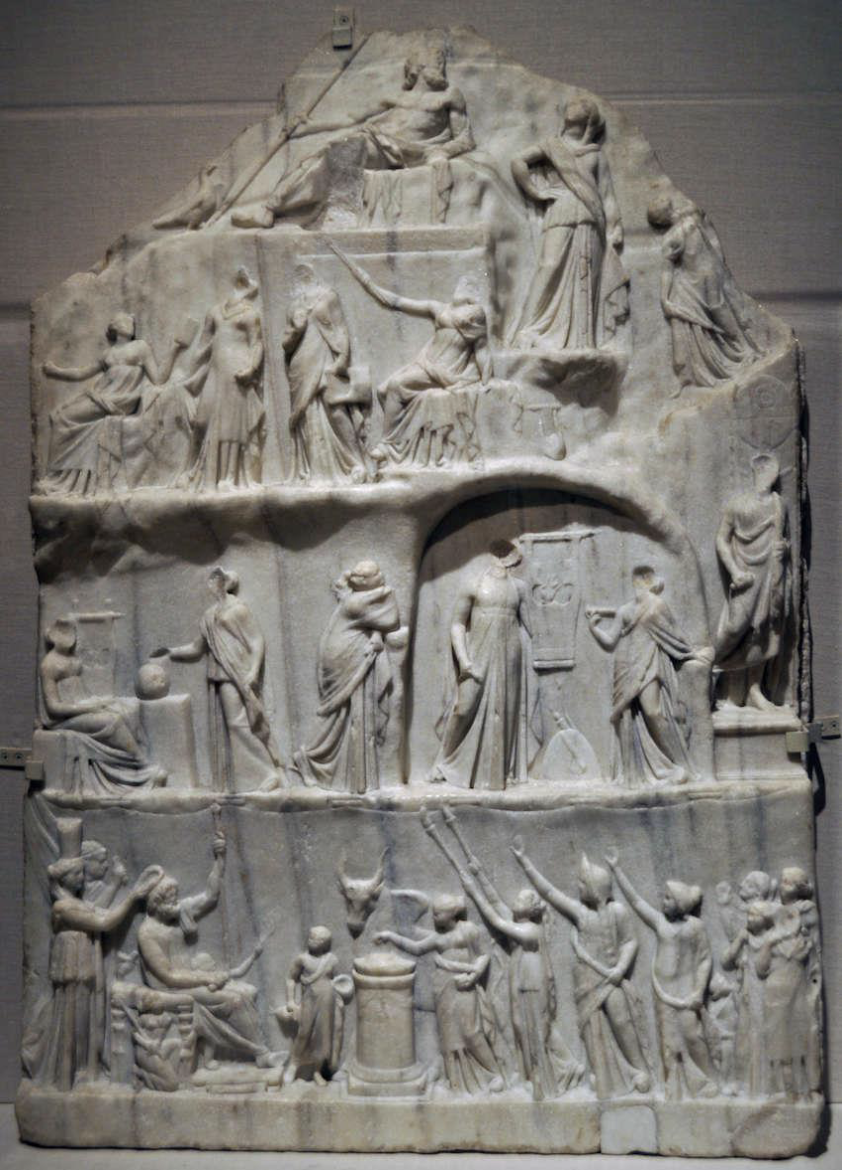
Archelaos relief from Bovillae, signed by Archelaos of Priene. Marble, 3’ 9”
All figures are labelled. Calls upon intellect instead of emotion. May have been from Museon or shrine of Homer in Alexandra. Apotheosis of Homer, muses, personifications.
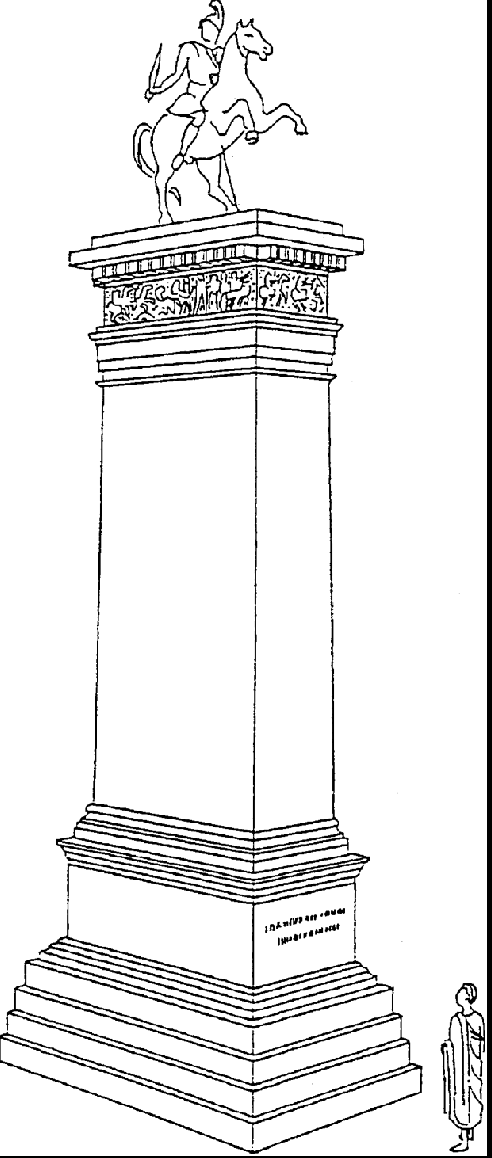
Monument of Aemilius Paullus reconstruction, Delphi, c 168 BCE, marble. Victory monument, right in front of sanctuary of Apollo
Severe style
480-450 BCE, early Classical style. Characterized by contrapposto, doughy draperies, pouty lips, heavy chin. Ex. Kritios boy c 480 BCE; Warrior from the sea off Riace c 460-450 BCE
Contrapposto
Standing with weight on one leg. Ex. Kritios boy c 480 BCE
Centauromachy
Battle between humans and centaurs. Ex. Temple of Apollo at Bassai frieze, c 400-390 BCE
Gigantomachy
Battle between (often) gods and giants. Ex. altar of Zeus at Pergamon east frieze, c 170-155 BCE
Chryselephantine
Made of gold and ivory. Ex. the Parthenon’s cult state (Athena Parthenon) c ~440 BCE
Engaged columns
Attached to the wall at the back (not fully carved in the round). Ex. interior ionic columns in the Temple of Apollo at Bassai, c. 400-390 BCE
Dipteral
Two full rows of columns completely encircling the temple. Ex. Temple of Apollo at Didyma c 330 BCE
Pythia
the high priestess and oracle of Delphi, Sits over chasm in trance and prophesies. Priests translate prophecies.
Diadochoi
Alexander the Great’s successors (close friends and generals). Fought over who would take over Alexander’s empire, ended up splitting it into kingdoms (Ptolemaic, Seleucid, Antigonid, etc)
Hellenistic baroque
Style of the Hellenistic period characterized by chaos, excessively mobile and expressive figures. ex. the altar of Pergamon, Laocoon and his sons